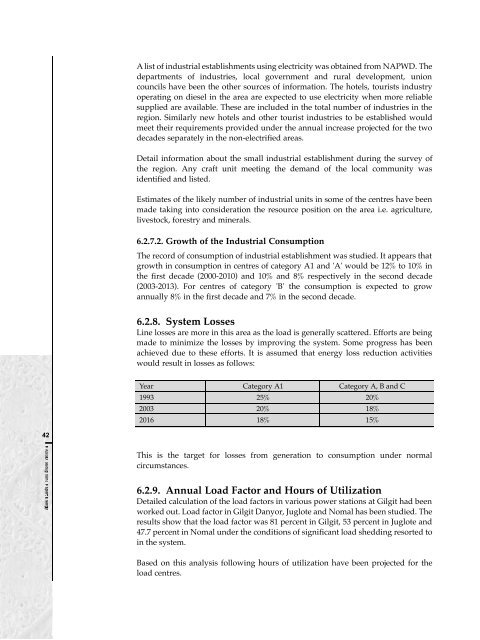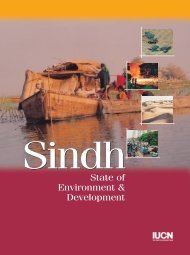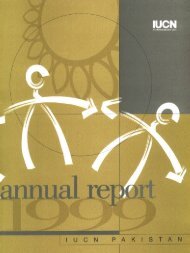Energy - IUCN
Energy - IUCN
Energy - IUCN
You also want an ePaper? Increase the reach of your titles
YUMPU automatically turns print PDFs into web optimized ePapers that Google loves.
A list of industrial establishments using electricity was obtained from NAPWD. The<br />
departments of industries, local government and rural development, union<br />
councils have been the other sources of information. The hotels, tourists industry<br />
operating on diesel in the area are expected to use electricity when more reliable<br />
supplied are available. These are included in the total number of industries in the<br />
region. Similarly new hotels and other tourist industries to be established would<br />
meet their requirements provided under the annual increase projected for the two<br />
decades separately in the non-electrified areas.<br />
Detail information about the small industrial establishment during the survey of<br />
the region. Any craft unit meeting the demand of the local community was<br />
identified and listed.<br />
Estimates of the likely number of industrial units in some of the centres have been<br />
made taking into consideration the resource position on the area i.e. agriculture,<br />
livestock, forestry and minerals.<br />
6.2.7.2. Growth of the Industrial Consumption<br />
The record of consumption of industrial establishment was studied. It appears that<br />
growth in consumption in centres of category A1 and 'A' would be 12% to 10% in<br />
the first decade (2000-2010) and 10% and 8% respectively in the second decade<br />
(2003-2013). For centres of category 'B' the consumption is expected to grow<br />
annually 8% in the first decade and 7% in the second decade.<br />
6.2.8. System Losses<br />
Line losses are more in this area as the load is generally scattered. Efforts are being<br />
made to minimize the losses by improving the system. Some progress has been<br />
achieved due to these efforts. It is assumed that energy loss reduction activities<br />
would result in losses as follows:<br />
Year Category A1 Category A, B and C<br />
1993 25% 20%<br />
2003 20% 18%<br />
2016 18% 15%<br />
42<br />
This is the target for losses from generation to consumption under normal<br />
circumstances.<br />
6.2.9. Annual Load Factor and Hours of Utilization<br />
Detailed calculation of the load factors in various power stations at Gilgit had been<br />
worked out. Load factor in Gilgit Danyor, Juglote and Nomal has been studied. The<br />
results show that the load factor was 81 percent in Gilgit, 53 percent in Juglote and<br />
47.7 percent in Nomal under the conditions of significant load shedding resorted to<br />
in the system.<br />
Based on this analysis following hours of utilization have been projected for the<br />
load centres.
















